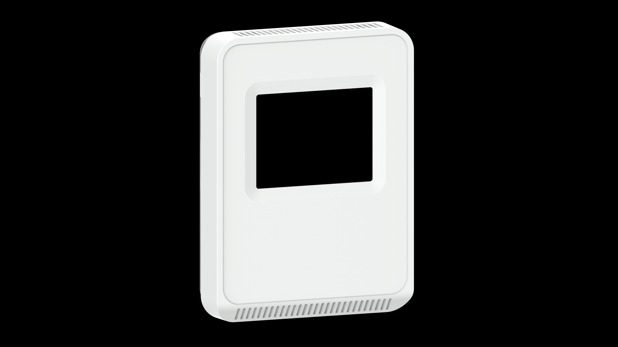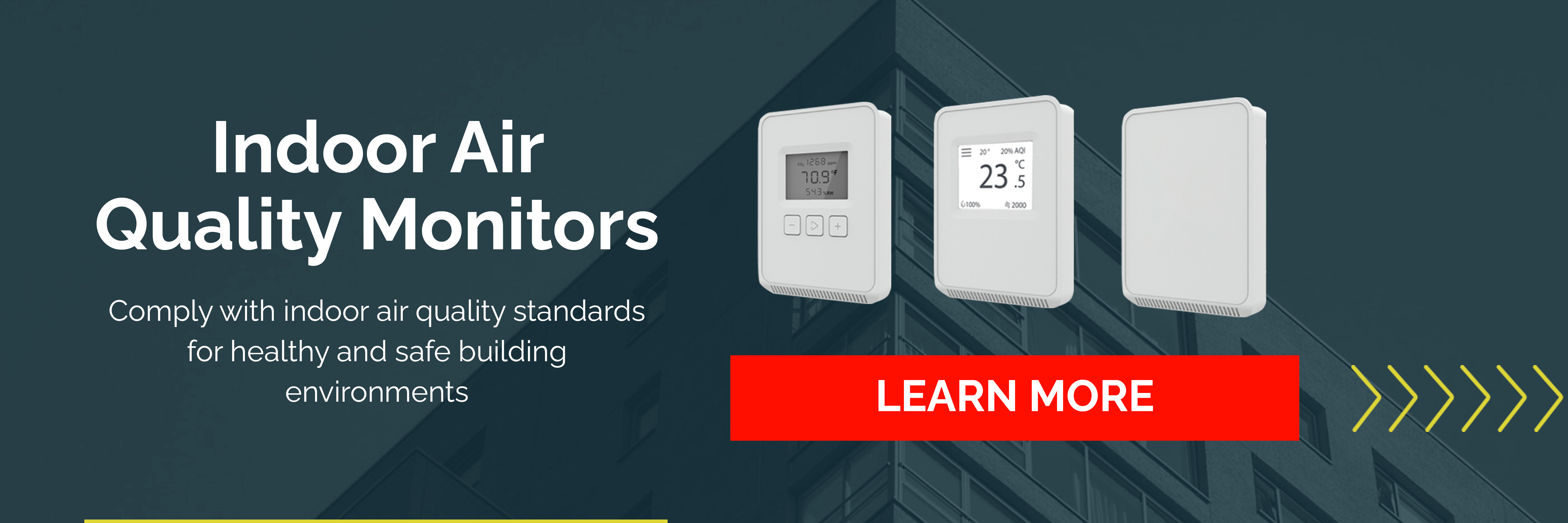Exploring the Touchscreen Interface of Our New Room Sensors

Veris has long given our customers a choice between simple LCD displays or blank faces on our IAQ room sensors. With the release of our new and improved CW2, HW2, and TW2 wall-mounted room sensors, Veris has added an exciting new interface option to the mix: a full-color touchscreen display.
Let’s take a closer look at the functions and operation of this robust and convenient modern interface using an HW2 Series humidity sensor. We’ll provide pointers on display operation and insights into what you can accomplish versus a more traditional LCD model.
Larger Display, Clearer Output Values
The HW2 touchscreen sensor features a larger, backlit display with more numerical clarity than segmented LCD, for easy-to-read output values and easy-to click touchscreen menu operation.
In the visuals to the right and below, you can see that the main screen of our HW2 wall sensors shows applicable outputs in a larger font than the LCD screen, in Fahrenheit or Celsius (at your option), in addition to setpoint, fractional temperature, and percentage RH values.
Touchscreen Interface Operation
Clicking the menu button will populate the main display with a grid of icons that access various submenus and settings. The top row of icons, in left-to-right order, includes an Integrator’s submenu (with model, serial #, date code, and rev code info), a single-press Occupied/Override button, single-press Fahrenheit/Celsius toggle, and a Settings submenu to change the display’s color scheme.
You’ll have the option to switch between four attractive touchscreen color palettes, according to your preference or room aesthetics. You might even use this option to color-code multiple IAQ sensors by unit responsibility.
The final Setpoint icon on the second row will actually vary, depending on the DIP switch settings you’ve selected (temp, RH, or fan). Clicking your DIP-designated icon will bring up a submenu with easy-to-adjust setpoint buttons.
One advantage of the touchscreen is the flexible and visual nature of the controls. Temperature and humidity can be operated by simple, labelled + and - buttons, whereas fan speed offers you four quick-clickable icons in order of increasing fan speed.
Advantages vs. the LCD Screen
Our three-button LCD interface (shown at left) remains popular and effective in our lineup of wall-mounted room sensors. However, the static + Value, - Value, and Menu Advance buttons just can’t offer the same intuitive functionality as a sensor touchscreen with a transforming menu (and submenus) of visual icons to represent desired functions.
Rather than pressing the LCD menu advance button multiple times (or holding it for a set number of seconds) in order to access the various functions of the room sensor, all you’ll need to do is press the touch menu button once and then select the function you want. In general, this will be a faster, more efficient, and easier way to operate our second-gen room sensors.
If you’re interested in further exploring the functions and capabilities of the new touchscreen sensor models, feel free to check out our HW2 Series installation guide right here.





